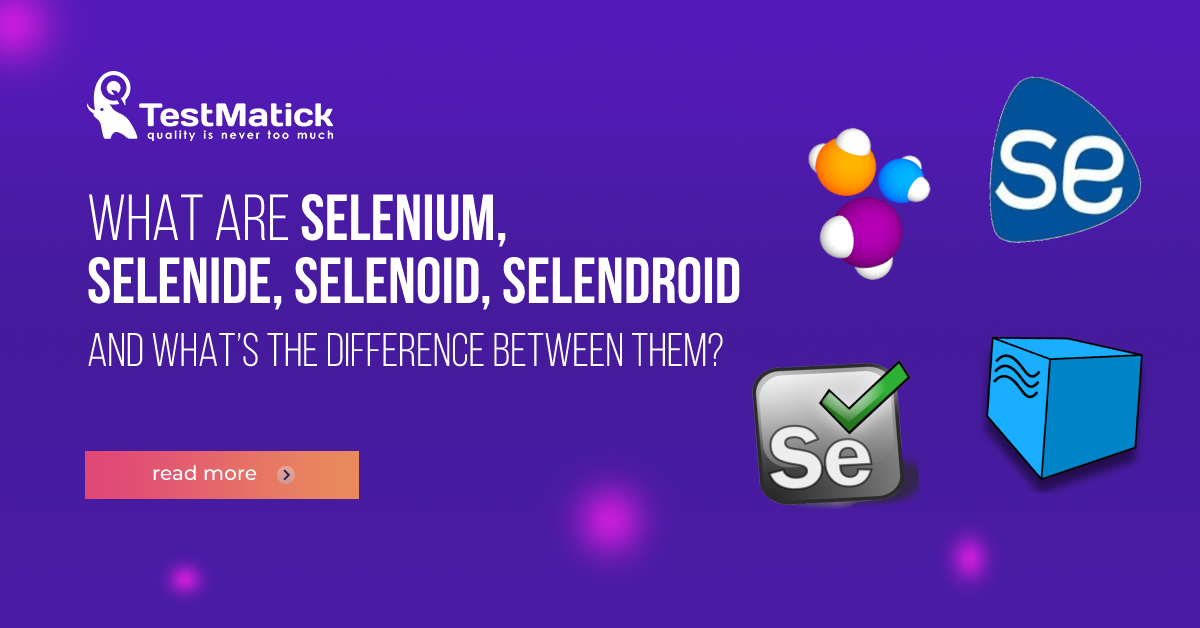If you’re a junior automated QA, the beginning of your career path may seem very difficult for you. You will have to learn a lot of new terms, study all the nuances of modern tools performance, and so on.
For example, Selenoid, Selenium, Selendroid, Selenide – what are they? What’s the difference between them? Is it possible to compare them at all?
Further, we will talk about these concepts.
Selenium
Selenium is a special tool to automate the management of web browsers.
Inside Selenium, there is an entire open-source software product line:
- Selenium IDE;
- Selenium Grid;
- Selenium Server, etc.
Selenium IDE is a small plug-in for Mozilla Firefox where specialists can easily write and reproduce particular user actions. It has nothing in common with Selenium Server or Selenium Grid, and it can operate only with local web browsers.
Selenium Grid is installed on one PC and can interact remotely with others that already have Selenium Server installed. It is used to start tests on many PCs by using only one of them which has the Grid.
To create a session, you have to go to the PC with Grid. And it decides which machine is less loaded at the moment and sends the necessary command to it.
Absolutely all machines that interact with Selenium Grid can operate under different OSes with various web browsers (popular or not).
Selenium Server is a program that allows managing necessary web browsers based on the original drivers unit. It has to be on the same PC with a web browser where a user will work. Selenium Server allows controlling web browsers on a particular local PC.
Selenide
Selenide is another framework for automated software testing. It allows quickly and easily writing program code that will create and send HTTP requests on Server / Grid.
It is maximally developed for creating scripts that can test the operation of web products: detecting the necessary web objects, checking the execution of events, working with the UI, and so on. Although Selenide is very similar to Selenium, it was developed by another project team.
You can get more information about this software following the link: https://selenide.org/
Selenoid
With this program, a user can manage web browsers and some Android emulators based on special drivers, as well as independently launch each of them in an isolated Docker container environment.
Selenoid is an alternative to Selenium Server although its nature is identical: the organization of interaction between the functioning browsers.
The basic goal of Selenoid is to launch new containers for every session and stop it as soon as the session ends. This product allows withstanding really heavy loads without additional resource consumption.
Selendroid
This is a special framework for automated testing of different mobile software based on Android. It is used for products with an Android version less than 4.2.
Today it isn’t a popular framework and is mostly used to support all applications and other mobile products.
Conclusion
To sum up, we’d like to say that there are a lot of automated tools that have particular functions. Now, every junior automated tester should understand the difference between Selenium and Selenide, as well as he/she has to build necessary connections and patterns of testing methods when using Selenium Grid / Selenium Server.










Leave A Comment